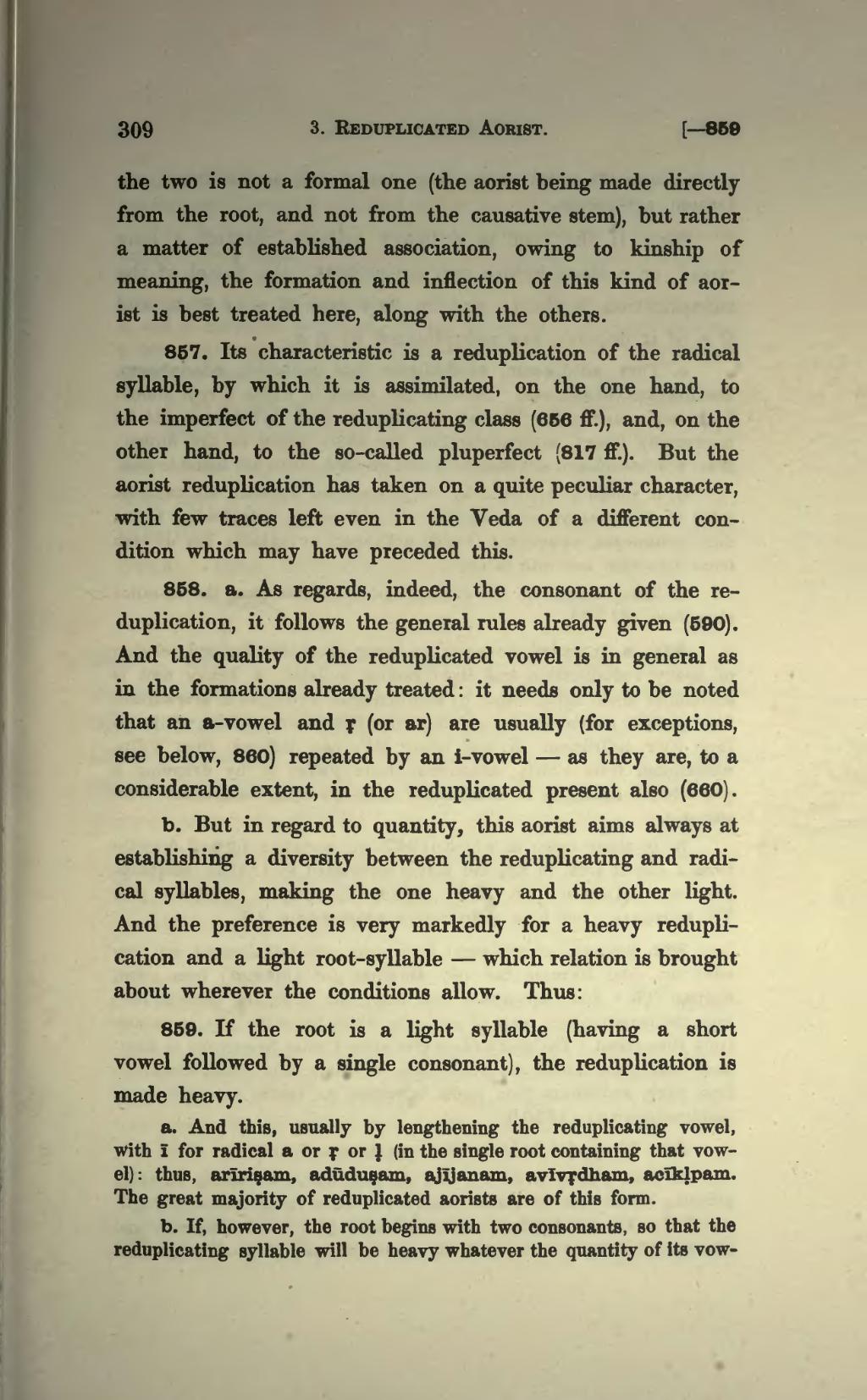the two is not a formal one (the aorist being made directly from the root, and not from the causative stem), but rather a matter of established association, owing to kinship of meaning, the formation and inflection of this kind of aorist is best treated here, along with the others.
857. Its characteristic is a reduplication of the radical syllable, by which it is assimilated, on the one hand, to the imperfect of the reduplicating class (656 ff.), and, on the other hand, to the so-called pluperfect (817 ff.). But the aorist reduplication has taken on a quite peculiar character, with few traces left even in the Veda of a different condition which may have preceded this.
858. a. As regards, indeed, the consonant of the reduplication, it follows the general rules already given (590). And the quality of the reduplicated vowel is in general as in the formations already treated: it needs only to be noted that an a-vowel and ṛ (or ar) are usually (for exceptions, see below, 860) repeated by an i-vowel — as they are, to a considerable extent, in the reduplicated present also (660).
b. But in regard to quantity, this aorist aims always at establishing a diversity between the reduplicating and radical syllables, making the one heavy and the other light. And the preference is very markedly for a heavy reduplication and a light root-syllable — which relation is brought about wherever the conditions allow. Thus:
859. If the root is a light syllable (having a short vowel followed by a single consonant), the reduplication is made heavy.
a. And this, usually by lengthening the reduplicating vowel, with ī for radical a or ṛ or ḷ. (in the single root containing that vowel): thus, arīriṣam, adūduṣam, ajījanam, avīvṛdham, acīkḷpam. The great majority of reduplicated aorists are of this form.
b. If, however, the root begins with two consonants, so that the reduplicating syllable will be heavy whatever the quantity of its vow-
